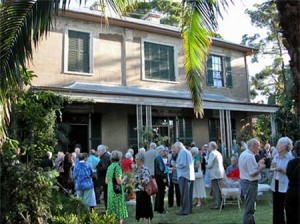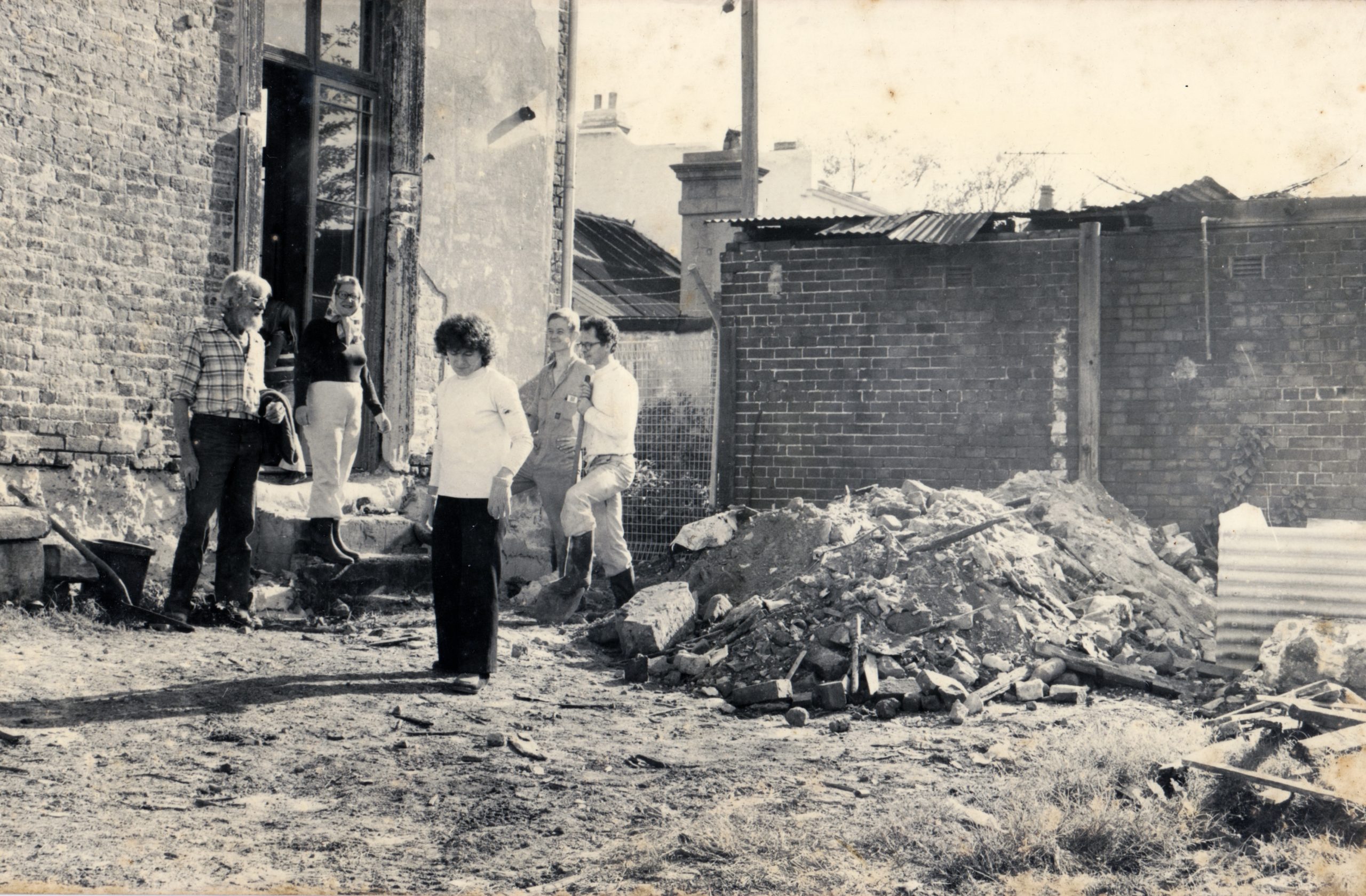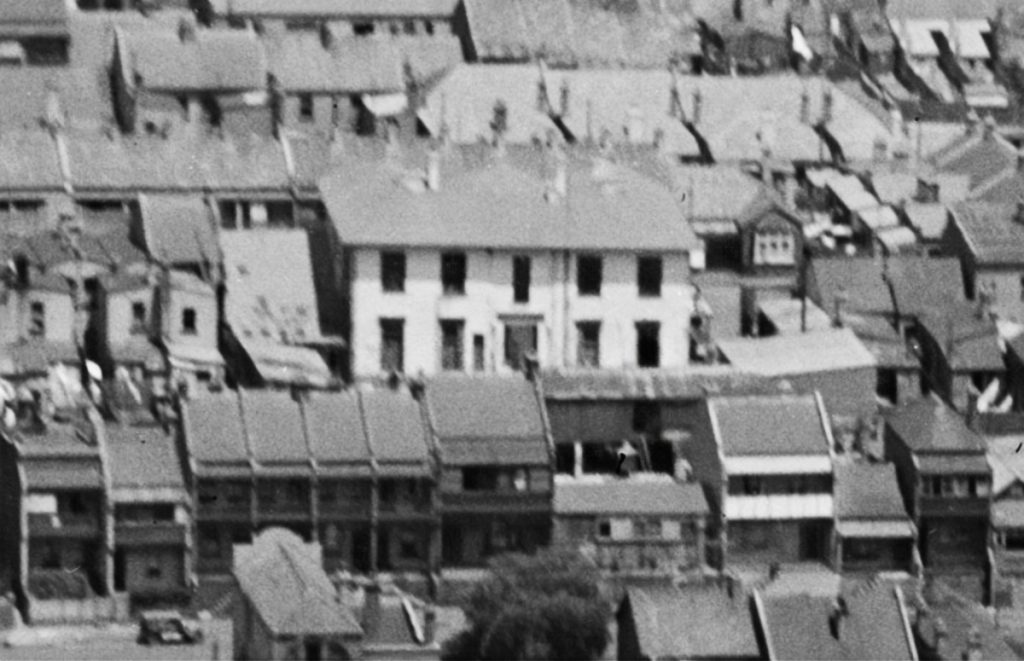By Ted McKeown, Bulletin 6/2023, August
The sixteenth site nominated in 2021 for a Blue Plaque is Lyndhurst at 61 Darghan Street. Lyndhurst was designed by John Verge and completed in 1836 for Dr James Bowman, the principal Colonial Surgeon and the son-in-law of John Macarthur. It is a superb example of Verge’s Greek Revival style architecture. The original site of the house comprised about 36 acres, ’commanding about a mile of frontage’ to Blackwattle Bay. Bowman spared no expense in the materials selected for the erection of this ’marine villa’, its furnishings and the landscaping of its gardens. But by 1842 Bowman was in severe financial difficulties, and Lyndhurst and his other properties were conveyed to his brothers-in-law James and William Macarthur, who took over his debts to the Bank of Australasia. Bowman died in 1846.
By 1847 the Macarthur brothers were themselves heavily in debt to the Bank of Australasia, and leased the property to St James College, Australia’s first Anglican theological college. In 1852 the bank sold Lyndhurst to the Roman Catholic Church for St Mary’s College, at the time the most important Roman Catholic school in Sydney. But it gradually declined, and in 1877 the College was closed. Between 1878 and 1885 the Church subdivided the estate into small lots, which it then sold. Four thousand pounds of the proceeds were given to the Jesuits to assist in establishing St Ignatius’ College, Riverview.
Lyndhurst and its remaining grounds were sold in 1878 to Morris Asher (1818-1909), a businessman and Parliamentarian. For a time he lived there, but in 1882 he leased it as a lying-in (maternity) hospital. In about 1890 he subdivided it into three dwellings, one of which became the Lyndhurst Private School run by Miss Agnes Watt. After Asher’s death, the property fell into a gradual decline, being used for, among other things, a laundry, a cabinetmaker’s workshop, an ice-cream factory, a broom factory and a printing works. In 1972 it was sold to the Department of Main Roads and was intended to be demolished to make way for the proposed North-Western Expressway.
In 1973 the DMR evicted the tenants, and the property was soon vandalised, the roof rusted through, and fires were lit inside by squatters. It seemed only a matter of time before the house was destroyed or demolished, but the Save Lyndhurst Committee, chaired by heritage architect Clive Lucas and strongly supported by the Glebe Society, campaigned actively for the route of the expressway to be changed so Lyndhurst could be saved for eventual restoration.

The real turning point came in 1976, when the Wran Labor government abandoned inner city expressways. Although in a derelict condition, Lyndhurst was capable of restoration. A permanent conservation order was placed on the property in 1982. Ownership was transferred to the Historic Houses Trust of NSW in 1984, and Lyndhurst was indeed magnificently restored by the Trust under the guidance of Clive Lucas in 1998. It was listed on the NSW State Heritage Register in 1999. Lyndhurst served as the headquarters of the Trust until 2005, when it was sold to private owners.
More about Lyndhurst
The historic building
https://glebesociety.org.au/buildings/lyndhurst/
Saving Lyndhurst from the expressway in the 1970s
https://glebesociety.org.au/saving-a-sydney-suburb/
https://glebesociety.org.au/socialhistory/12594/
Squatters, radicals, activists
Poster 6B of https://50years.glebesociety.org.au/exhibition/board-and-wall-displays/glebe-society-in-action#posters
https://glebesociety.org.au/socialhistory/the-glebe-society-and-the-battle-of-the-expressways/
https://glebesociety.org.au/socialhistory/albert-mispel-and-the-anti-expressway-campaign-1970-1977/











One comment. Please add yours.
Thanks